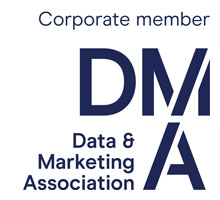How Effective is your Advertising Really?
GWI – 31 May 2019
Source GlobalWebIndex blog
Growth in the number of consumers blocking ads hasn’t deterred brands from pumping more money into online advertising.
Increasingly, brands and media owners are being told to be more considerate about how the person on the other end is feeling.
This means learning how to seduce consumers with highly-targeted ads, instead of targeting en masse with ads perceived as nothing more than an interruption.
Despite it being easier for brands to pre-test their ideas before launching a full-blown campaign, this only tells you what might work. After your strategy has played out, what happens then?
It’s during post-campaign analysis of performance that real, actionable insights – insights with the power to supercharge future advertising strategies – are revealed.
Where some brands go wrong.Data. It’s been touted the currency of the 21st century for a while. Not only do we put our trust in analytics, it’s what we rely on to gauge if our campaigns are having the desired effect.
The reality is, with so many ad formats to implement and measure, the path to assessing advertising effectiveness accurately isn’t very clear cut.
There’s no rulebook on how to measure the overarching impact of a cross-platform campaign. The same goes for measuring the effectiveness of individual channels within the campaign.
Brands will always differ in what they choose to measure, the way they measure it, and how they define what constitutes successful advertising.
Many rely on transactional, lifestyle and behavioral data to understand their consumers, and website analytics to assess traffic and unique visitors.
But is this enough? What’s the best way to go about measuring advertising effectiveness?
- How do you know your ads were placed on the right channels?
- If they aired for the right amount of time?
- If the messaging and creative were compelling enough to the target audience?
- If the target audience got served the ad in the first place?
Believing analytics can answer these questions is only partly true. Why?
Because ambiguity is present. It’s not as accurate to make assumptions about audiences based on data that reflects devices and cookies, as opposed to real people.
For many brands, last touchpoint attribution is the holy grail. But, real people are complex, and relying on this data without context can skew the interpretation.
You might know a lot about your audience (and their behaviors), but if you’re not asking them directly, you’re not receiving vital information from them first hand.
The best course of action?
It takes both passively-derived analytics and active survey data to get a true sense of whether something is working.
Measuring advertising success effectively.Advertising effectiveness offers an end-to-end solution for brands looking to understand the impact of their advertising on the audiences they want to influence.
The tool helps brands:
- Ascertain the true reach of their campaign
- Evaluate the true impact of their campaign
- Measure ROI with complete confidence
- Identify which campaign metrics need improvement
The key for any brand wanting to improve the quality of their digital campaigns is to move beyond the use of behavioral analytics and vanity metrics alone towards a more holistic and tell-all solution.
Combined with behavioral analytics (passive data), trusted survey data(active data) gives brands the assurance of really knowing if their ads are hitting the mark.
The combination of active and passive data can’t be beaten – it eliminates gaps in visibility and removes the temptation to treat assumption as fact.
Survey data enables you to get feedback on how your ads are performing, directly from the consumers you’re targeting. A control versus exposed methodology is used to measure differences in opinion and uncover hard metrics on brand lift.
By surveying a mix of people who have and haven’t seen your campaign, you’re able to:
- Determine if your ads are reaching the right people
- Find out if they’re having the desired effect on your target audience
- See if they’re shifting perceptions in the right direction
- Work out if they’re guiding customers along the path to purchase
- See which attributes of the campaign and the advertisements which make up the campaign are the most effective
The control versus exposed method helps brands quantify the impact of their advertising over various time periods.
Here’s how it works:
- Those who have seen the ad (exposed) and those who have not (control) are both sent an identical, bespoke survey, framed around the ad campaign objectives and the brand metrics you want to measure.
- The difference in opinion between these two groups is essentially what quantifies the impact of your campaign.
To strengthen the comparison, subjects who haven’t seen your advertisements (the control) are only surveyed if they display the same attributes as your target audience.
What’s more, combining advertising effectiveness with our audience validation solution makes it possible to receive daily updates about the reach of your campaign.
The purpose of audience validation is to profile consumers who’ve been exposed to advertising using the power of our global survey on the digital consumer.
Delivered in an email every day, the information helps brands fine-tune their advertising strategy in real time – namely, who they’re targeting.
End-to-end campaign measurement in practice.Tequila Avión’s media agency, Fullsix, used this method to analyze the overarching effectiveness of their brand awareness advertising campaign.
The insights revealed during this process helped them ‘close the loop’; they had the passive and active data they needed to back themselves. This meant Fullsix could demonstrate to Tequila Avion how to asteer the next advertising activation towards an even better future for the brand.
Measuring Advertising effectiveness is about merging the formulaic with the emotive – combining hard data from digital analytics, with survey data about people. There’s no other way for brands to gain a 360-degree view without putting these data sets side by side.
And in today’s competitive landscape, clued up brands are the ones that will stand the test of time.
Get the latest MRS news
Our newsletters cover the latest MRS events, policy updates and research news.















